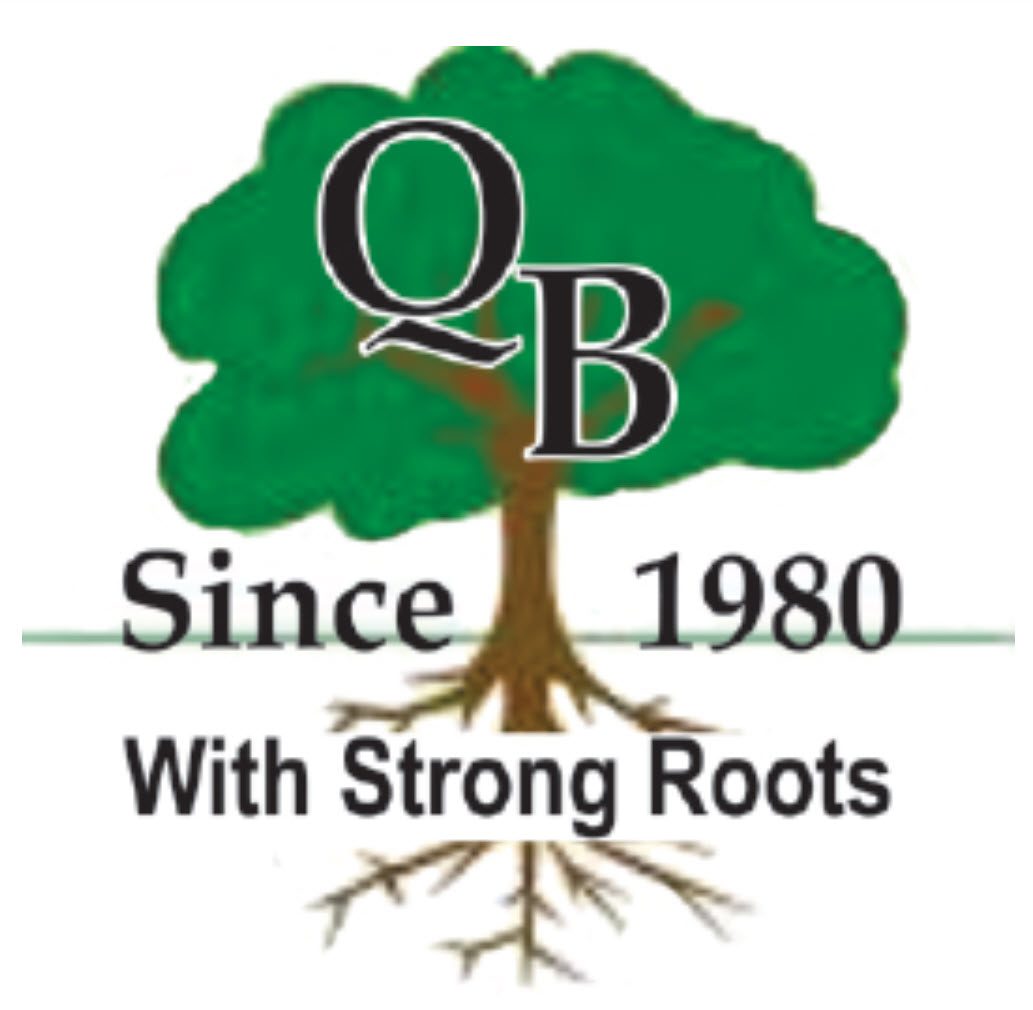-
- AGM and Great Moments in Genealogy
- The Skies Above: Vimy Ridge and the Battle of Arras, 1917
- Tales from the Script
- Hastings 1867 & Canada 150 Project Update
- Taming Your Inner Packrat
- What Shape is Your DNA?
- Staying Safe with Social Media
- Taking Root in a New Land
-
- 2019 News
- 2018 News
- 2017 News
- 2016 News
- 2015 News
- 2014 News
- 2012-2013 News
- 2011-2012 News
- 2010-2011 News
- 2009-2010 News
- 2008-2009 News
- 2007-2008 News
- 2006-2007 News
- 2005-2006 News
Quinte Branch November Meeting:
AGM and Great Moments in Genealogy
by Quinte Branch
Article by John Carew, Photos by Georgette Green
The November 18, 2017 Branch Meeting which was the last of our events for 2017 has come and gone.
The abbreviated Annual General Meeting (AGM) was Chaired by Terry Buttler, primarily focused on three agenda items: Election of Officers for the 2018 Branch Executive, an oral summary of the Chair’s report for 2017, and a reminder from the Membership Coordinator that membership renewal is upon us. The final and detailed report from the Chair with be published in 2018 and submitted to OGS for consolidation with all the OGS Branch reports, as is our custom. Minutes of the AGM will be submitted for approval by the general membership at the earliest opportunity in 2018.
The Election of Officers was a brief event, with all incumbent Officers being acclaimed in their respective positions for 2018, with one exception. The Treasurer’s position becomes vacant in 2018, and, there being no volunteers or nominations for the position, we will begin the 2018 calendar year without a treasurer in place, along with the five Committee Chair positions being officially vacant, namely Library, Programme, Publications, Webmaster and Social Hostess.
Quinte Branch will continue to function for the present with this limitation. However, it is to be expected that adjustments to the Branch Council list of positions, and list of tasks to be performed on an ongoing basis (essential and optional) may have to go through a reconciliation of sorts as we begin the new year.
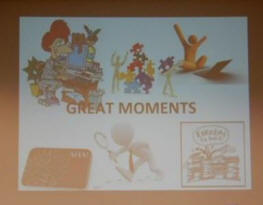 |
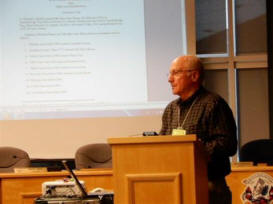 |
“Great Moments” presentations included
Rodney Green on “traditional family history” vs “researched history”
Following the AGM, the assembly enjoyed presentations and discussion on the general topic of Great Moments in Genealogy. Three podium presentations were sufficient to generate a robust “to and fro” on the content of the presentations, other similar experiences, what to do with old unnamed photos and a smattering of other issues which we from time to time experience in the great and not-so-great adventures of family history and genealogical pursuits. Lois Duggan offered a heartwarming reminiscence of her Canniff and Ridley ancestors and their sacrifices and accomplishments during the Great War, 1914-1918. Rodney Green showcased a comparative example of family history facts of the Mason family as viewed by his grandmother in her time as family historian against a slightly different set of facts, exposing the soft underbelly of our favorite pastime which is fraught with the limitations of “passed down family history” versus “researched history”, both of which are subject to the knowledge of the historian and the facts available in a given moment. John Carew explained the benefits of collaboration over time using the example of the Faulkner family who came to Canada in the early part of the 19th century, where the collaboration and the gain in knowledge was in both directions in terms of the search for truth in shared family history.
 |
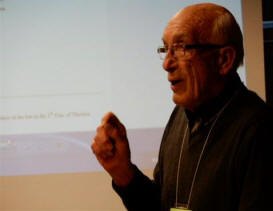 |
WW1 memorabilia by Lois Duggan and the importance of collaboration by John Carew, Past Chair
Presentation Topic: The Skies Above:
Vimy Ridge and the Battle of Arras, 1917
by Major William March
Article by John Carew
Major March very effectively used quotes from combatants in the war which spoke directly to the successes and failures of the use of air power, clearly revealing the unpredictability of this new element of warfare, and the transition by war’s end to more successes and less failures. In addition, there were many photographs provided to highlight the starkness of the struggles being played out in WW 1, both in the air and on the battlefields which claimed so many lives. To wit, the Royal Flying Corps which included many Canadians, had a very positive influence in the outcome of the Battle of Vimy Ridge.
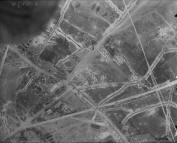 |
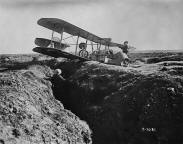 |
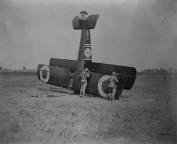 |
Vimy Ridge and the Battle of Arras, 1917
Major March served over 35 years in the CF/RCAF, is an RMC graduate, flew with several Maritime Air Squadrons, and had one tour in Afghanistan. Bill holds a Master’s Degree from the University of Victoria. His varied career in flying roles, staff appointments and RCAF history and heritage has continued with the Primary Reserve as the RCAF Historian.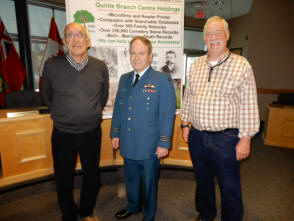
John Carew, Past Chair, Major William March, and Terry Buttler, Chair.
(Photo by Georgette Green)
Presentation Topic: Tales from the Script:
Learning to Read Old Handwriting
by Carol St. Clair
Article by Terry Buttler, Photos by Georgette Green and Cheryl Levy
• How do I start doing my Family History?
• What resources do you have? To the very specific:
• Do you have any information on my family name?
• My grandmother came from around here; how do I find out more information on her?
• How does DNA work?Needless to say, these questions required one-on-one interaction and kept our volunteers very busy and engaged. Overall, we had over 50 visitors; it was a full day in our library meeting, interesting people. You really don’t realize how much you know about a subject matter until you start talking to someone about it.
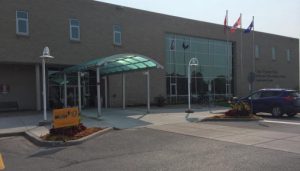 |
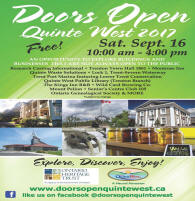 |
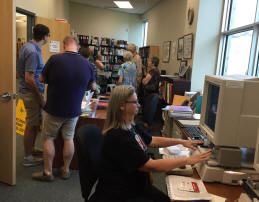 |
Doors Open Quinte West 2017 at Quinte West Public Library.
Visitors exploring the Quinte Branch Research Library.
Sept 16th was also our scheduled general meeting day. “Doors Open” visitors were welcomed to attend, as are all members of the general public. Some of our members continued to volunteer their time in our library during the meeting to provide coverage for those ongoing visitors, so they missed our extremely interesting speaker and her topic. (Thank you Sharron and John.)
Carol St. Clair gave us an interactive presentation on “Tales from the Script”. Carol is a Certified Master Graphologist and Document Examiner by profession with an interest in her own family history. After taking us through some basics like having the audience draw single lines to express certain emotions, she showed us how physical characteristics and patterns of handwriting can be interpreted to show a person’s personality. Applying these techniques to old letters, postcards, wills, and other documents that your ancestor wrote, your family history research takes on a whole new dimension. Yes, Graphology may be generally considered a pseudoscience, but judging on our audience reaction to some of the possible personality evaluations of known relatives’ handwriting and their own knowledge of that relative, there were some startling confirmations. Who knew the size of your letters, the spacing between words, the way you made your “L” and “e” loops, dotted your “i’s,” crossed your “t’s” etc, could say about you or your long deceased relative? Wow! Thank you Carol!
An interesting and insightful way to kick off the fall session!
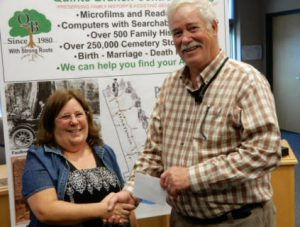
Carol St. Clair, Master Graphologist and Terry Buttler, Chair
Quinte Branch May Meeting:
Presentation Topic: Hastings 1867
by Dick Hughes
Article by John Carew, Photos by Georgette Green
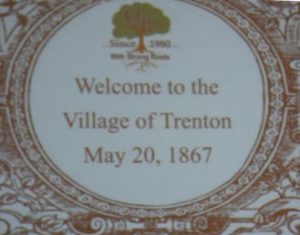 |
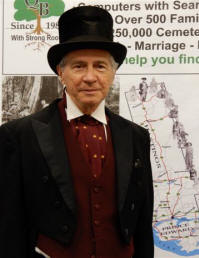 |
| Richard Hughes gave us a glimpse into the Village of Trenton and Hastings County in 1867. |
For the Quinte Branch meeting on May 20, our members and guests were treated to a “Then and Now” presentation in two parts. Richard Hughes whisked us back 150 years to May 20, 1867 to accomplish two things. One was to bring into focus the amazing developments of the previous two years, 1865-67, and how the Dominion of Canada came about at Charlottetown, Quebec City and London. And two, just a couple of months before the creation of the newly minted and united Dominion of Canada, we were offered insight as to where we stood as citizens of this new entity in the village of Trenton, city of Belleville and County of Hastings. In short, we were provided with a snapshot at what life was like in our communities on May 20, 1867. Richard gave us some close-ups of the development of the Quinte area as of that time, and the promises of a better future as the riches of Canada were developed. He presented in full costume for the period.
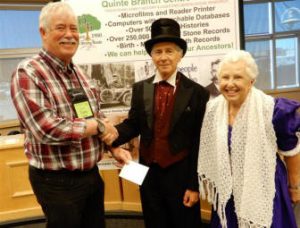
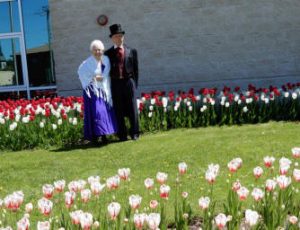
Marilyn & Richard Hughes with the #Canada150 tulips in front of Quinte West Public Library

Update for Canada150 Project
by John Carew
John Carew provided a short review of our Quinte Branch Canada 150 Project. John provided a summation of the project outcomes, and gave us a glimpse of some of the ancestral history contributions which have turned the project into a living and breathing digital book about our 1867 Canadian ancestors. As this was the last meeting before the summer break, and only about 40 days before the big “150” celebration, it seemed like a very good time to wrap up the successful outcome of our Canada 150 project, a celebration of our Canadian ancestors, and look at our ancestral heritage and our Canada, then and now, through the lens of May 20, 1867, provided in fine fashion by Richard Hughes. The 45 in attendance enjoyed the lovely Saturday afternoon, on Victoria Day weekend. As a poignant reminder, it was Queen Victoria who signed the British North America Act into being, effectively, Canada’s birth registration papers, dated 150 years ago.
Quinte Branch April Meeting:
Digital Presentation Topic: Taming Your Inner Packrat
Webinar Presentation by Lisa Alzo
Article by John Carew, photos by Georgette Green
The lead-in to this webinar was, “Are you drowning in a sea of papers, documents, old photographs and other research materials? Feeling like a family history hoarder? If you want to be a more efficient and organized genealogist, then you won’t want to miss this special genealogy society presentation. Learn how to purge your inner packrat and bust through the clutter:
How to organize family history documents, photographs, for quick retrieval.
The pros and cons of going paperless.
Stress-free filing strategies and creating checklists to stay on track.
Effective ways for distributing and sharing genealogical information with others.
Tools, apps and resources for taming your paper and electronic monsters.”
I have repeated the promo literature for good reason. It is not the first time that we have heard these ideas espoused. The subject is about correcting a lot of bad habits, not only in genealogy matters but in our daily lives.
Lisa Alzo gave us some personal insights as to how and why she embraced the need to change and improve her own situation and spent the rest of her presentation time trying to convince us to buy into this philosophy. The ideas she offered for consideration all make perfect sense, will help us down the road in our ability to find, use, share and preserve the important documents, photos and information that we all have labored so hard and long to amass, and all we must do is change our habits.
Thankfully, for those of us who attended this webinar lecture, Lisa provided a basketful of handout links to other genealogists for motivation and perspective about the range of possibilities and benefits that we might want to adopt. Lisa made it perfectly clear that we are all individualistic, and not every idea for organization and sorting and preservation and managing our genealogical treasures will appeal to every one of us. The message nonetheless is to do something that will work for us, individually.
I am considering her suggestions, and have found a couple of ideas that don’t seem like too much of a brick wall to start climbing over.
The key is, make time for getting rid of the packrat syndrome.
For more information about the content of this presentation, visit website here.
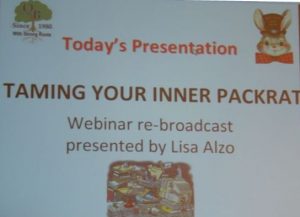
Great tips for Organizing and Decluttering our Genealogy
Digital Presentation Topic: What Shape is Your DNA?
by Diahan Southard
Article by John CarewThe Quinte Branch gathering of members and guests was treated to another highly informative lecture in our educational series on the evolutionary use of DNA in genealogical research. Make no mistake about it: of all the tools or sets of tools available to the ardent family historian to conduct research, DNA is the most complex, novel and least fully developed. Each year sees marked progress in the transition of this scientific field of study from the research laboratory to the desk of you and I, refinement after refinement, from theory to professional opinion to state of the art methodology. In Diahan Southard’s opening remarks, she zeros in on the genetic genealogy industry, the crucible for all things DNA in the quest for a smooth and complete transition from pure science to practical application in our chosen pursuit of truth in family history.In this regard, much is being discovered in genetic genealogy about the ways in which we can analyze our autosomal DNA data. There is a hot debate over two seemingly competing ideas: the DNA Circle, or the Triangulation method. The DNA Circle was pioneered by AncestryDNA and relies on small shared segments and complete family trees. The Triangulation method requires a chromosome browser and detailed calculations of shared amounts of DNA. Diahan covered questions like, which is the best route to take? Do I need a chromosome browser? How can I use these methods in my own genealogy? Autosomal DNA is an ever-changing field, and this lecture e the latest methods of analysis and interpretation for the non-scientist genetic genealogist. As with most subjects of this nature and complexity, the best we can do is pay attention to the advancements, and the simplification of procedures and availability of “how to” advice. More than many other aspects of our hobby, DNA brings with it greater and more refined abilities to solve research problems, and an equally impressive learning curve which must be mastered.
Quinte Branch February Meeting:
Digital Presentation Topic: Staying Safe with Social Media
Webinar Presentation by Thomas MacEntee
Article by Cheryl Levy
On February 18, our monthly meeting began with the usual announcements by our Chair, Terry Buttler, and a report that our membership totals are up for this year compared to the same time period last year. This is good news at a time when some are choosing online research over belonging to a local genealogy society. Both are valuable since many resources have not been digitized or uploaded to the Internet. If you have not yet renewed your OGS and Quinte Branch memberships for 2017, visit our website here for details.
Next John Carew, Past Chair, gave an update on our #Canada150 Project. The April 1st deadline is fast approaching. Everyone, who had ancestors living in what is now Canada on July 1, 1867, is encouraged to make a submission, no matter how long or short it is as format and length are entirely up to the contributor. Submission Guidelines and details are available here.

Quinte Branch OGS #Canada150 Project
Our scheduled February presentation was Tales of the Script by Carol St. Clair, however, she was unable to attend due to illness. Carol will be rescheduled to present at a later time. This launched Plan B into action after acquiring permission to show the digital presentation Staying Safe with Social Media by Thomas MacEntee in its place. This recording was originally a Legacy Family Tree Webinar and can be accessed here.
The description says, “Are you hesitant to use popular social media sites such as Facebook or Twitter or even Pinterest and share your genealogy research because of issues involving personal information and privacy? Learn how to safely navigate these sites and still get the most out of them!” Thomas did an excellent job of breaking it down into easy step-by-step tasks for users to investigate their settings and options to ensure their privacy and online security were protected. He gave both warnings and recommendations for using the various social media platforms. The presentation was followed by a brief question and answer time and, of course, refreshments and conversation.
Quinte Branch January Meeting:
Crouse-Wanamaker Lecture:
Presentation Topic: Taking Root in a New Land
Presentation by Cheryl Levy, PLCGS
Article by John Carew, Photos by Georgette Green
At least once a year, Quinte Branch Council takes the opportunity to reflect on the beginnings of the Branch and the far-sighted Charter members who took it upon themselves to gift to Hastings and Prince Edward Counties a genealogy resource to be proud of and be locally available in the search for family history facts and figures. Each January, our first general meeting for the calendar year provides us with that special moment vis a vis the Crouse-Wanamaker Lecture. Gordon Crouse and Loral and Mildred Wanamaker were instrumental in bringing the Branch into being in 1980 and leading the way during those critical first years. A brief history of the Branch was offered by our Chair, Terry Buttler, highlighting the contribution of Gordon, Loral and Mildred and the devotion of the 26 Charter members to the Branch.
In consideration of the importance of this annual pause for reflection, we always try to select an appropriate lecturer and topic to suite the occasion. Mindful that 2017 is Canada’s 150th Anniversary, and that we are celebrating not only the political and social order implicit in the birth of a nation, it did not escape our attention that Canada is, by any measure, principally a land of immigrants, migrants and their descendants. So, easy peasy, we opted for a lecture on immigration, delivered by our very own Cheryl Levy, PLCGS. What a great decision that was!
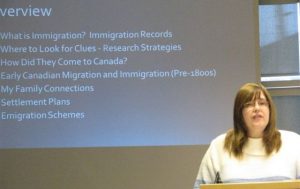
| Canadian immigration and migration – Do you know what part your family played? |
Cheryl could have taken the easy route and have only talked about the mechanics of identifying ancestors through access to the multitude of databases available to researchers. She covered that aspect of course. In addition, she wiled us with 90 minutes of event-driven immigration and migration to Canada to join with the First Nations peoples, through the earliest European migrations to North America, and moving forward. As much as her presentation was professional and replete with immigration and migration facts, and a very eye-opening history of Canada’s development through the process of immigration and migration, there was much more information than what could be reasonably squeezed into this short article. Thankfully, Cheryl was kind enough to have made her presentation handout available to all members of Quinte Branch, in addition to those members and guests who attended her lecture. The topics covered included: Early Canadian Migration and Immigration, First Nations, New France, Acadians, Louisburg, Foreign Protestants, New England Planters, United Empire Loyalists, Settlement Plans – Peter Robinson, and Emigration Schemes – British Home Children. It is my firm belief that since the topic list does not bring us to the present timeframe, there may well be a sequel lecture to fill that void. We can only hope.
Thanks, Cheryl.
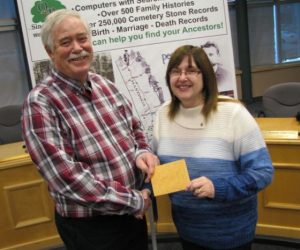
Terry Buttler, Chair, thanks Cheryl Levy, PLCGS
